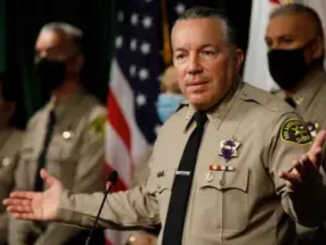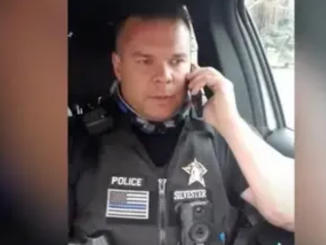
New administrative code rules were adopted by Texas Gov. Greg Abbott’s Public Safety Office designed to prevent municipalities from defunding their police departments.
They were adopted after the state legislature passed several “Back the Blue” bills that Abbott signed into law last June. The new rules also make good on a pledge he made last January to cities and municipalities: fulfill your duty to keep residents safe or lose access to state tax revenue.
“Texas remains a law-and-order state and we continue to make it abundantly clear that we support our law enforcement officers who put their lives on the line every day to keep communities safe,” Abbott said. “My office’s adoption of these new rules will prevent cities from making reckless and downright dangerous decisions to defund the police, ensuring a safer future for Texans all across the Lone Star State.”
Neither the governor nor many lawmakers thought such legislation would be necessary in Texas. But after the Democratic-controlled Austin City Council voted to defund its police department by $150 million in 2020 and crime escalated, they said they were forced to act. Austin residents attempted to reverse the policy as well. But their ballot initiative was largely defeated by outside money pouring into the election.
The new administrative rules relate to HB 1900, which freezes property tax revenue for cities with a population over 250,000 whose leaders move to defund their police departments. Cities that defund their police will lose their annexation powers for 10 years and any area annexed by a defunding city in the past 30 years can vote to de-annex from the city, according to the law. It also allows the state to withhold sales taxes collected by a defunding city and give it to the Texas Department of Public Safety. Texas DPS would use the money to cover the cost of state resources to protect residents of a defunded city or municipality.
Overall, defunding cities are subject to tax rate limitations, losing access to certain tax revenues, and are subjected to other budgetary requirements and limitations. When a defunding city demonstrates that it’s reversed its police force reductions, the state Public Safety Office may reverse its defunding determination. The city or municipality would only be subject to limitations, reductions, and requirements if they defund their police departments again.
“Efforts to defund the police are downright dangerous, and these laws will prevent cities from making this reckless decision,” Abbott said when he signed the “Back the Blue” legislation last June. “These laws also help protect our law enforcement officers in the line of duty by enhancing penalties for crimes committed against them, such as using fireworks or laser pointers to harm or obstruct the police. With these laws, we are bolstering our support for law enforcement while ensuring a safer future for all Texans.”
Other bills Abbott signed into law were HB 9, HB 2366 and SB 23.
HB 9 enhances the criminal penalty to a state jailable felony offense for anyone who knowingly blocks an emergency vehicle or obstructs access to a hospital or health care facility. HB 2366 enhances criminal penalties for the use of laser pointers and creates an offense for the use of fireworks to harm or obstruct the police.
SB 23 requires voter approval to reduce law enforcement budgets in counties with a population of more than one million. If voter approval isn’t received, but a county still defunds the police, its property tax revenue will be frozen, according to the new law.
The laws went into effect Sept. 1, 2021.
The new rules will be published in the Texas Register later this month.
*story by Just The News


